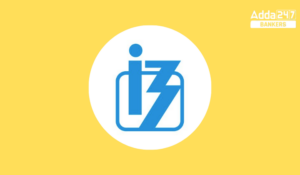Directions (1-5): The following table shows total no. of selected participants and % distribution of those selected participants of a city in all the five years. Study the table carefully to answer the related questions.
Q1. How many participants are selected in DID in 2007 from all the cities together?
Q2. No. of participants selected from Mumbai in the year 2006 is what percent more or less than that of Vadodara in the same year?
Q3. What is the average no. of participants in the year 2008 from all the cities together who get selected in DID? (approximately)
Q4. What is the ratio of participants selected from Lucknow in 2009 and 2010 together to those who were selected from Bhopal in the years 2009 and 2010 together?
Q5. If in 2005, the no. of selected participants from Delhi and Mumbai were 20% and 40% less than that of 2006 respectively then find the difference between selected participants of Delhi and Mumbai in the year 2005?
Directions (6-10): Study the following table carefully and answer the questions based on it. The table shows the data about result of students of class Xth who have appeared in board exam from six different schools i.e (P,Q,R,S,T And U)
Q6. If the ratio of failed male students of Q to passed male students of S is 1 : 4 while sum of passed female students of S and failed female students of Q is 160, then find the number of appearing students in Q.
Q7. If passed students of Q are 700/9% more than failed students of S, then by what percent passed female students of Q are more than passed male students of S?
Q8. If failed male students of school Q and failed female students of school U are same in number, then find passed male students of Q are what percent of failed male students of U?
Q9. It is known that number of appearing students of T is 350 which ismore than the number of passed students of U. Find by what percent failed males of U are more than failed females of T.
Q10. Passed students of ‘R’ are what percent of passed students of U? (appeared students of ‘R’ are 8.4 times failed male of U)
Directions (11-15): table given below shows the number of students in seven institutes over different years. Study the following table carefully and answer the questions given below it.
Q11. In year 2005, ratio of male to female students from both institutes A and G was same i.e. 7 : 3. What will be the new percentage of females in institute G if 50% of the females and 50% of males from institute A were transferred to institute G?
Q12. If in 2008, overall 60% students passed from all the institutes then, no. of passed students in 2008 is what percent of average no. of students from all the institutes in 2006 (approximately).
Q13. In year 2003, the ratio of passed students to failed students from institute C was 4: 5. If the no. of male and female students for the same institute in year 2003 was 11 : 7 then, find the ratio of students failed to no. of females in institute C in 2003?
Q14. If in 2007, 20% of students from institutes D and 40% of students from institute E were selected for an inter-college competition, then what percent of the students from both the college were selected for the competition? (approximately)
Q15. The average no. of students in institute F over all the years is what percent more/less than the average no. of students in year 2008 for all the institutes? (approximately)





 RBI Assistant Syllabus and Exam Pattern ...
RBI Assistant Syllabus and Exam Pattern ...
 IRDAI Grade A 2026, Eligibility, Exam Pa...
IRDAI Grade A 2026, Eligibility, Exam Pa...
 IBPS RRB Previous Year Question Paper fo...
IBPS RRB Previous Year Question Paper fo...








